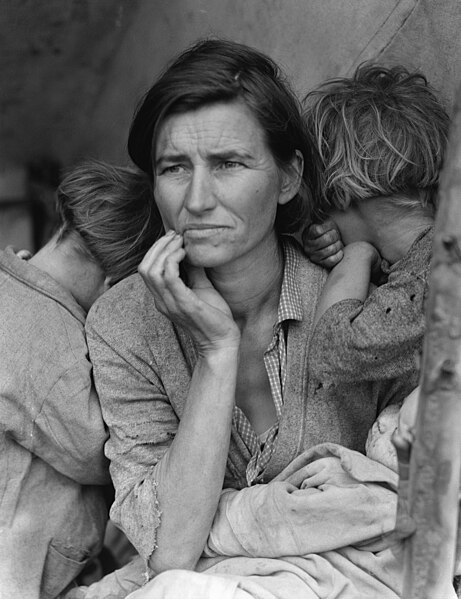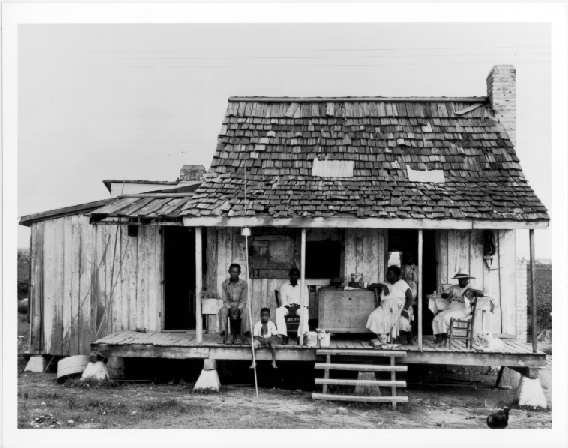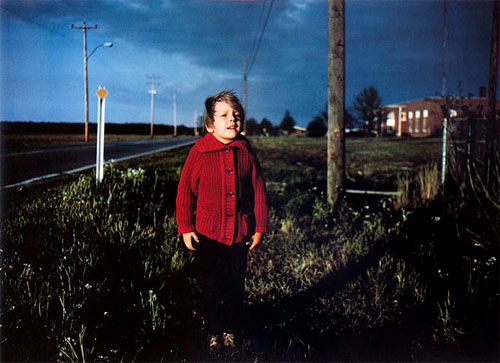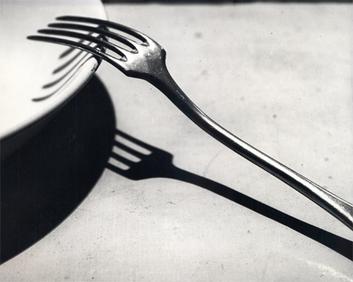4. What do you like best about your images?
I like that my images are landscape images but 2 out of 3 have water in the pictures as well. I love taking photos of the ocean or a lake (as I did here). I like that my images show the movement of the water and the flow it produces. Overall i'm pleased with my images but believe they could have been a bit clearer in the background.
6. How could you improve your image or process?
I could improve my images by playing with the controls more and using more of the skills we learned in class. I have to learn how to really work with my camera and let it help me produce better images. Other than that I think my process of eliminating images and choosing the best ones is fine.
2. How did you evaluated your work, what were you looking to create for the assignment, and was this idea a good idea?
When I evaluated my images I looked to see that the subject of the photo was clear and that everything around it was as well made out as possible. When I looked through the images I took I made sure to look and see what I would have to edit if I chose that picture. I tried to evaluate all my pictures equally and in the end these were the ones I chose.
Monday, November 25, 2013
Friday, November 8, 2013
20 Photo Artists
Author: Margaret Hooks
Photographer: Tina Mondotti
Publisher: Aperture Foundation
Name: 150 Photographers On Their Art
Author: Brooks Johnson
Photographer: Varied
Publisher: Aperture Foundation
Name: Nonfiction
Author: Mark Singer
Photographer:
Publisher: Walker Creek Press
Name: Steichen
Author: Elliot T. Parker
Photographer: Edward Steichen
Publisher: Double Day and Company Incorporated The Museum of Modern Art
Name: Walker Evans
Author: Maria Morris Hambourg
Photographer: Walker Evans
Publisher: Princeton U Press
Name: Ideas Without End
Author: Richard Lorenz
Photographer: Imogen Cunningham
Publisher: Library of Congress Catagory
Name: Henri Cartier-Bresson
Author: Robert Capa
Photographer: Henri Cartier-Bresson
Publisher: Aperture Foundation
Name: The Photo Book
Author: Ian Jeffry
Photographer: Varied
Publisher: Phaidon Press Limited
Name: In Real Life
Author: Leslie Stills
Photographer: Imogen Cunningham, Dorothea Lange, Lola Alvarez Bravo, Carrie Mae Weems, Elsa Dorfman, and Cindy Sherman
Publisher: Library of Congress Catagory
Name: Black and White Photography
Author: Henry Horenstein
Photographer: Varied
Publisher: Little Brown and Co
Name: 25 Lessons I've Learned About Photography
Author: Lorenzo Dominguez
Photographer: Lorenzo Dominguez
Publisher: Create Space Independent Publishing Platform
Author: Ruth Gruber
Photographer: Ruth Gruber
Publisher: Schocken
Name: 50 Most Inspirational Photographers of All Time
Author: Chris Dickie
Photographer: Varied
Publisher: Barron's Educational Series
Name: 50 Photographers You Should Know
Author: Peter Stepan
Photographer: Varied
Publisher: Prestel
Name: Diane Arbus: A Biography
Author: Patricia Bosworth
Photographer: Diane Arbus
Publisher: W.W. Norton & Company
Name: Mapplethorpe: A Biography
Author: Patricia Morrisroe
Photographer: Robert Mapplethorpe
Publisher: Da Capo Press
Name: Humans of New York
Author: Brandon Stanton
Photographer: Brandon Stanton
Publisher: St. Martin's Press
Name: The Adobe Photoshop Lightroom 5 Book for Digital Photographers
Author: Scott Kelby
Photographer:Varied
Publisher: Peachpit Press
Name: Gregory Heisler: 50 Portraits: Stories and Techniques from a Photographer's Photographer
Author: Gregory Heisler, Michael R. Bloomberg
Photographer: Gregory Heisler
Publisher: Amphoto Books
Name: Vanity Fair 100 Years: From the Jazz Age to Our Age
Author: Graydon Carter
Photographer: Varied
Publisher: Harry N. Abrams
Thursday, November 7, 2013
History of Photographers 19 & 20
Eliot Erwitt
Eliot Erwitt is a Parisian photographer known for his satirical situations in everyday situations which he captured in his photos. His family moved to the United States where he first started to become interested in photography. He studied photography at Los Angeles City College and he finished his education in 1950. He shot photographs all around the world becoming a 'free lance' photographer. He also is known for creating an alter ego that is a pretentious french man named André S. Solidor.

I like this photograph because the mirror image is so clear and the background is faded out and yet still beautiful. I like how Erwitt captured the happiness on the woman's face in the mirror and that he was skilled enough to do this. It's a very nice picture because you can picture the woman in the car facing the ocean even though this is not shown in the photo. I also find this photo very romantic, which makes it enjoyable as well.

I find this photo very ironic and uplifting. It's funny how the seemingly normal couple are walking their tiny dog, until you get a closer glimpse at one of their legs. This photo implies a lot. The photo shows a dog's legs next to a person's leg, but which is the real dog: the man or the woman? One would figure it would be the woman walking such a small dog, but the boots suggest it could be a man as well. So who is the dog? That's what Erwitt wants you to think about.
Marilyn Monroe. I can bet you've heard of her even if you aren't a fan of hers. Marilyn was a very complicated individual, much more than what she revealed to the public. I believe some of the madness in her mind was captured in this photo taken by Elliott Erwitt. From far away she looks just like Marilyn, an actress doing a pose like any other photo. But if you look closer into her eyes, there is something else there. Something that is very far from the happiness a great actress should have. Erwitt may have used humor in some of his other photos but he reveals a deeper meaning in all his photographs no matter what form of production he uses.
Dorathea Lange
Dorathea Lange was one of the most inspirational photographers of all time because of her skills when taking documentary style photos during the era of the Great Depression. She first learned the art of photography at Columbia University in New York. Lange also worked for the RA and the FSA. Her most famous photo is titled "Migrant Mother" and has been featured on many things related to the Great Depression and is still admired today. Lange died of esophageal cancer when she was 70 years old. When she entered the later years of her life she suffered a lot of health problems because of her suffering from Polio as a child.

I'm sure you've seen this photo before whether in History class or everyday life. This is Lange's most famous photograph "Migrant Mother" taken during the Great Depression. The first time I saw this picture I had no idea who took it. I like this photo very much because it reflects the pain that not only a mother faces in a depression but the children as well. The hopeless look on her face reaches out to you and I love that Lange was able to capture this emotion.

This photo is the definition of a documentary photograph. It is taken merely to see and know how things were during the Great Depression. This photo makes me sad, to see the conditions that people had to live in. Over all this photo is a great photo, it's clear and to the point. It shows the housing conditions and how many people live there. I don't think documentary photography is my favorite type of photography because to me it lacks substance. I wish there was more emotion instead of stone cold facts.

This photo says a lot. It's ironic and sad that the kids are doing such a childlike pose when they look so angry and sad. These children probably had to learn to grow up at a very young age because of their situation of having to grow up during the Great Depression. This photo gives the impression that a lot of children didn't have time just to be kids, they had to take responsibility that most kids don't have to. I like the use of grey tones in this picture, while there are some dark grey colors there is never the harshness of black that some black and white photos have. This gives the photo a dreary, dirty quality that goes along great with the theme of the Great Depression.
Monday, November 4, 2013
History of Photographers 17 & 18
W. Eugene Smith
W. Eugene Smith is a fabulous photographer who refused to conform to society's view of 'proper photography' with his brutal and vivid images of the chaos of WWII. He was also a well known journalist, his ability to take photos only increased his creative value. Smith entered WWII and took photos of the war as it progressed and was wounded while trying to capture the gritty photos. He worked for many different magazines during his lifetime including Life magazine.

I like this photo because there is a truth behind it. I wonder who that man is talking to on the phone and what significance it had to the situation in the room, the women who look agitated and nervous. The ability to capture an emotion or a set of emotions in a photo is a wonderful thing and this is what Smith has done. He has made the situation more real, caught in the moment through a camera.

This photograph makes me sad when I look at it. It's not just because of the probably dead child in the soldiers arms, it's because of the soldier holding it. These were once innocent men, not touched with the horrors of a brutal war, and someday long after this photo was taken these men probably still wake in terror from post traumatic stress. This war changed a generation. Once again Smith was able to capture this gritty reality in a gritty photograph.

This photo was featured on the cover of Life magazine. I like it because of the darkness on the man's face, not jut the shadowing but the dirt and sweat, and then the shocking white color of the cigarette he holds in his mouth. When men were away at war smoking was one of the only normal routines they had, the one thing they could control. It's ironic to think it probably held some sort of hope to them, "If I survive today I'll get my cigarette," they might have said. The determination Smith has caught in this soldiers eyes says, "I've survived another day and I've earned at least this."
William Eggleston
William Eggleston is mostly known for his usage of color in his photographs, sometimes even especially bright. He believed that his artwork was so bold that it should hang in honor in many galleries all over the world. He was inspired by Robert Frank, a well known Swiss photographer. He was a big fan of dye-transfer printing because he loved the way it enhanced an image. He was awarded the Outstanding Contribution to Photography Award in 2013.

I like this photo because of the colors. It may be shallow to say but after researching so many black and white photographers it's nice to have some colorful image. But as we were taught in Photo 1 color does distract from the actual image and I think it does so here. It's a fantastic image but looking at it without all the colors and tones is it really that great? To me the colors make this image, not the subjects.

The effect one color has on a photo is amazing. The dark blue grey color of the sky mixes so nicely with the forest green grass it almost looks as if the sky and ground are blended together. Then you have the child in the shocking crimson coat which is what your eyes are drawn to immediately. The use of colors and color patterns in this photo is amazing and the vividness is also appealing to the eye.

The normality of this photo is striking, but once again color seems to mask the imperfections of the subject itself. The girl's face is very pointed and the lighting could have been better. But I think that's what makes this photo, that it looks like he saw a pretty girl and took her picture in the spur of the moment. That's why it's a good picture, because it looks like if someone asked why he took it the answer would be, "Why not?"
Friday, November 1, 2013
History of Photographers 15 & 16
Laszlo Moholy-Nagy
Laszlo Moholy-Nagy was a well known Hungarian painter and an outstanding photographer. He created the Light Prop or Electric Stage which advances the art of photography dramatically. This allowed more light to create shadows in photographs that added depth to photos. Moholy-Nagy moved to the U.S. later in his life and lived in Chicago where he ran the New Bauhaus.

I like Moholy-Nagy's photos because of all the light that is shown in them but I dislike the lack of activity going on in the photos. The only thing going on in this photo is the one ma hanging out of the window and he isn't even the main focus of the photo. The photo just seems odd to me and in a blank sort of way. I just don't like or understand it.

This photo I like because of the angle. It's taken as if he was laying and hanging over these people whose photo he captured. I like that you can see the shadows and that it doesn't give you that same dry feeling the picture before does. I also like the contrast of the three people wearing the bright white hats while the rest of this picture is very grey and dark.
Once again this photo gives me that dry odd feeling that I don't like. The entire scene is too weird, the man's leg over the edge almost as if he is dancing to his death. The photo just gives me a feeling I don't like and the light is too bright and perfect making the viewer think that there is something bad happening with something pretty trying to distract you from the bad thing. It's like it's tricking you, it's an illusion.
Andre Kertesz
Like Moholy-Nagy Kertesz is also a well know Hungarian photographer. He contributed greatly to photo composition and photo essay. Kertesz never felt that he got all the appreciation he should have for his photographs. He spent time in both Hungary and France where his most well known images were taken. In his free time he liked to photograph street people including gypsies and local beggars. Today Kertesz is receiving the recognition he so much deserved when he was alive.

Kertesz took this photo "Circus," in Budapest and it's one of my favorites. I like that the light is soft and doesn't strain your eyes anywhere you look. I also like that you can't see their faces, giving the illusion are they looking at the circus or are they the circus? As you've probably guessed I adore photos with double meanings or long background stories so you can see why this is one of my favorites. It has great symbolism ad is an over all great image.

This is one of Kertesz's most famous photographs but I am not sure how to feel about it. It's very simple, it's just a fork which in a way makes it abstract which is interesting, and the shadows are very good as well. Overall this is a great image but I can't sense any meaning behind it which makes me feel like the photo is lacking substance.

I like the shadows in this photo and how small the people look in this photo. This photo shows how much smaller human beings are and how we can make things so much bigger and stronger than we are. I like this picture because it's from a high up angle that you wouldn't see normally. I also like this photo because each one of those people probably don't know they are in a famous photograph, they have lives of their own they are worrying about all of those small dots have a different life and different thoughts. It's amazing that this can all be captured in a photo.
History of Photographers 13 & 14
Edward Weston
Edward Weston is considered to be one of the most influential photographers of all time. The 40 years he spent on photography paid off, he had a very modern approach to photography, mainly photographing items he found intriguing, still lifes and nudes. His most famous photos are the ones he took of the trees that surrounded the town he resided in California. He only stopped doing photography when he developed Parkinson's disease and could no longer work. He worked in many different photo studios before finally opening his own in 1911. In 2010 two of Weston's photos were ranked as some of the most expensive photographs sold.
This photo called "Nautilus" is famous by Edward Weston. I like this photo quite a bit because of the plain quality it has. It's just a shell and yet it is still an interesting photo. It takes talent to be able to make such a plain object look like a piece of art. I also like how the shell is darker around the front and not as light as the rest of the shell. Its something about the way the shell looks that makes this photo interesting.

I also like this image taken by Edward Weston. It's odd and unique and gives a weird feeling to whoever observes it. Weston takes extremely unique and weird objects and photographs them in such a way that it makes them look intricate and unique. I like that he is able to create art out of such strange objects.

This photo is entitled "Inspiration" and is my least favorite photo by Weston. I feel the name has no deep hidden meaning, what could a crushed vegetable have to do with inspiration? Weston has taken his weirdness to the very next level and I think it is a bit too much for this photograph.
Lewis H. Hine
Lewis Hine is mostly known for his use of photography when trying to help change child labor laws and social reform in the United States. Hine studied sociology and photography and learned to combine both to help people in need. He photographed many different working places with many different working conditions all to make sure that working people were treated correctly and to expose companies that were not treating their employees as such. In the Library of Congress there are over 5000 photographs of social reform taken by Hine alone. He is kind of like the original Mike Carroll, using his photography to help people in need.

I have mixed feelings about Hine's photography. His photos are all brilliant in certain ways but they are more documentary photographs than ones taken for artistic purposes. The photo here doesn't hit a nerve when looking at the blank faces of the people traveling to Ellis Island, it doesn't make your heart skip a beat. The photo is merely a moment in history showing little significance.

I like this photo because it can be interpreted many different ways considering the angle of the man when he is turning the lever. To me this man looks curled as if he is in an almost upright fetal position. This gives the impression that this man has been a mechanic all his life and this is where he is most comfortable. The photo is taken carefully and everything is crystal clear in this image, yet another reason why I liked it.

This photo could have been so much more spectacular if the lighting was only a few shades lighter. The man's shadow also obscures the view, though maybe this was meant to be artistic. The picture just looks funny to me and at an odd angle which I don't like. This is perhaps my least favorite Hine photo because of the potential it had.
Subscribe to:
Comments (Atom)



